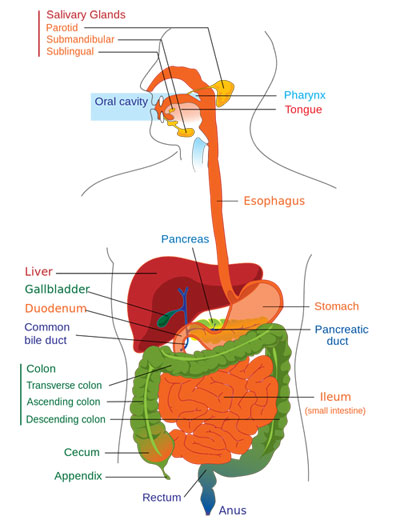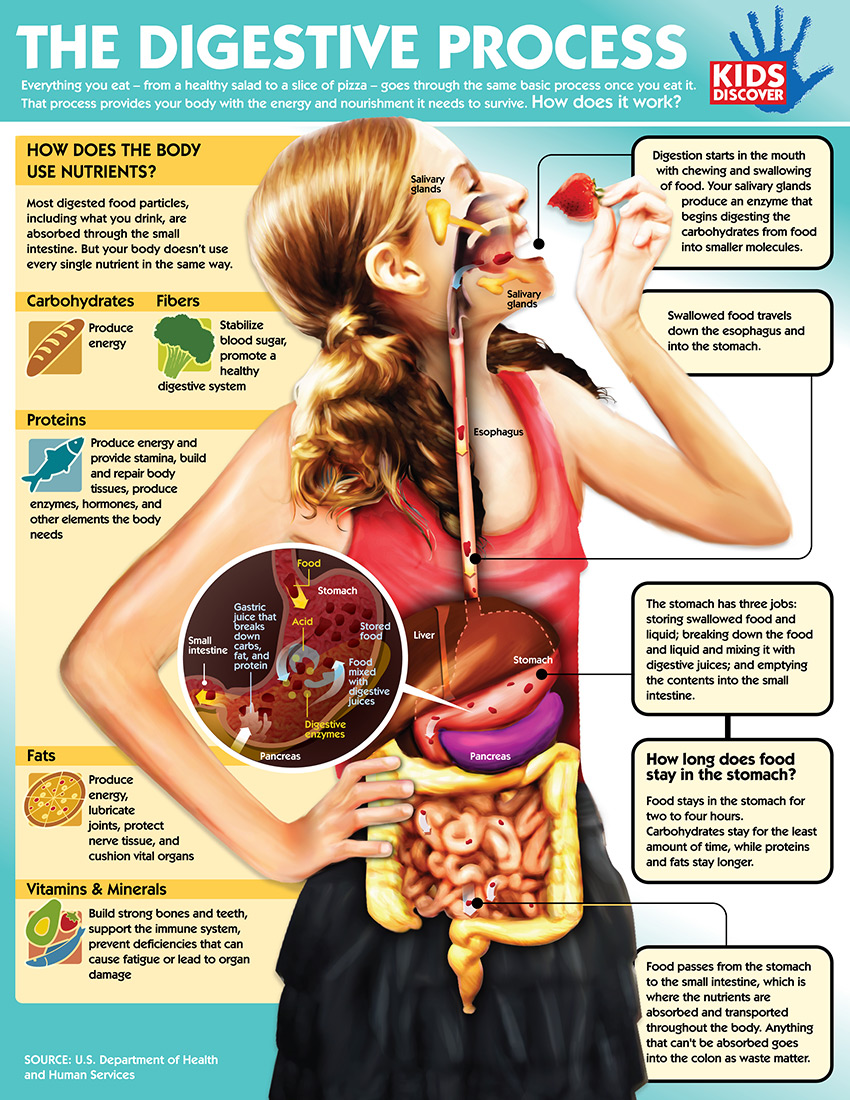Digestion is a complex process of transforming food you eat into energy you need to survive, as well as, creating waste to be eliminated from the body.
The digestive tract (gut) is a long twisting tube that starts at the mouth and ends at the anus. It is made up of many muscles that coordinate the movement of food and other cells that produce enzymes and hormones to aid in the breakdown of food. Along the way are three other organs that are needed for digestion: the liver, gallbladder, and pancreas.

The colon (large intestine) is a 5-7 foot-long muscular tube that connects the small intestine to the rectum. It includes the ascending (right) colon, the transverse (across) colon, the descending (left) colon and the sigmoid colon which connects to the rectum. The appendix is a small tube attached to the ascending colon. The large intestine is a highly specialized organ responsible for processing waste and facilitating defecation (excretion of waste).
Stool (waste left over after digestion) passes through your colon by means of peristalsis,* first in a liquid state and eventually in solid form. As stool passes through the colon, any remaining water is absorbed. Stool is stored in the sigmoid (S-shaped) colon until a “mass movement” empties it into the rectum, usually once or twice a day.
It normally takes about 36 hours for stool to pass through the colon. Stool itself is mostly food debris and bacteria. These bacteria perform several useful functions, such as synthesizing various vitamins, processing waste products and food particles, and protecting against harmful bacteria. When the descending colon becomes full of stool, it empties its contents into the rectum to begin the process of elimination.



Comments on this entry are closed.